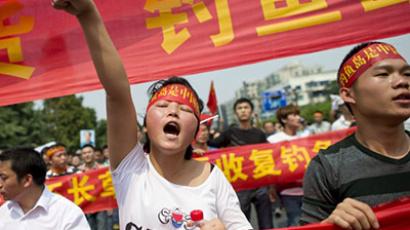US gives nod to 800km-range S. Korean missiles

The US has permitted its ally South Korea to develop ballistic missiles with more than double the range it was allowed earlier. The proliferation-harming move is meant as a reaction to Pyongyang’s military build-up.
The deal was announced Sunday by Chun Young-woo, top secretary to President Lee Myung-bak for foreign and security affairs of the Korean government, after weeks of expectation."The most important goal for our government to revise the missile guidelines is deterring North Korea's military provocations," Chun told the media.Seoul has been seeking permission for years to expand the range limit for its ballistic missiles from the previous 300km. The limit was set by a military alliance pact with the US, which hosts some 28,500 of its troops in Korea and is obliged to intervene militarily should the country be attacked.“This is part of a long discussion between the South Korean government and the Americans. The South Koreans have wanted to extend the range of their missiles for a long time…it’s interesting that the Americans have now agreed to it. Presumably, that has to do with the US elections,” Asia specialist Tim Beal told RT.After the landmark revision Seoul is allowed to deploy missiles with the range of up to 800km. This is likely to give pause to North Korea, but also to China and Japan, which would be within range of 800km South Korean missiles.The deal maintains the current limit on the payload for long-range Korean missiles at 500kg, although shorter-range versions may have bigger payloads, Chun said.The range boost may benefit the outgoing president’s Conservative Party during the December presidential election. Lee is banned from re-election by the constitution, but a major diplomatic victory in the last months of his presidency would build voter confidence and help the party remain in power, South Korean news agency Yonhap said.“South Korea wants to build in more capability before their elections in December which conceivably might bring in a more peaceful government,” Beal said.
Arms-control advocates are likely to be unhappy with the deal, which violates a voluntary international arms-control pact known as the Missile Technology Control Regime (MTCR). The pact urges its 34 members, including most major missile manufacturers, to restrict export of missile and drone aircraft technologies, which outreach 500kg payload and 300km range limits."Agreeing for any country to develop 800km range missiles, well outside the MTCR limits, would be a big mistake," told Reuters Greg Thielmann, who formerly took part in intelligence assessments on ballistic missile threats at the State Department's intelligence bureau and is now with the private Arms Control Association in Washington.Proponents of the boost argue that other regional powers, including North Korea, China and Japan, have developed their missile forces well beyond the restrictions taken on itself by Seoul.South Korea estimates that Pyongyang’s arsenal includes missiles with a range of up to 3,000 kilometers, although the exact capabilities of the weapons remain secret. Skeptics say the North’s long-range rocket science and engineering are mediocre at best, citing the failed launches over the years.















